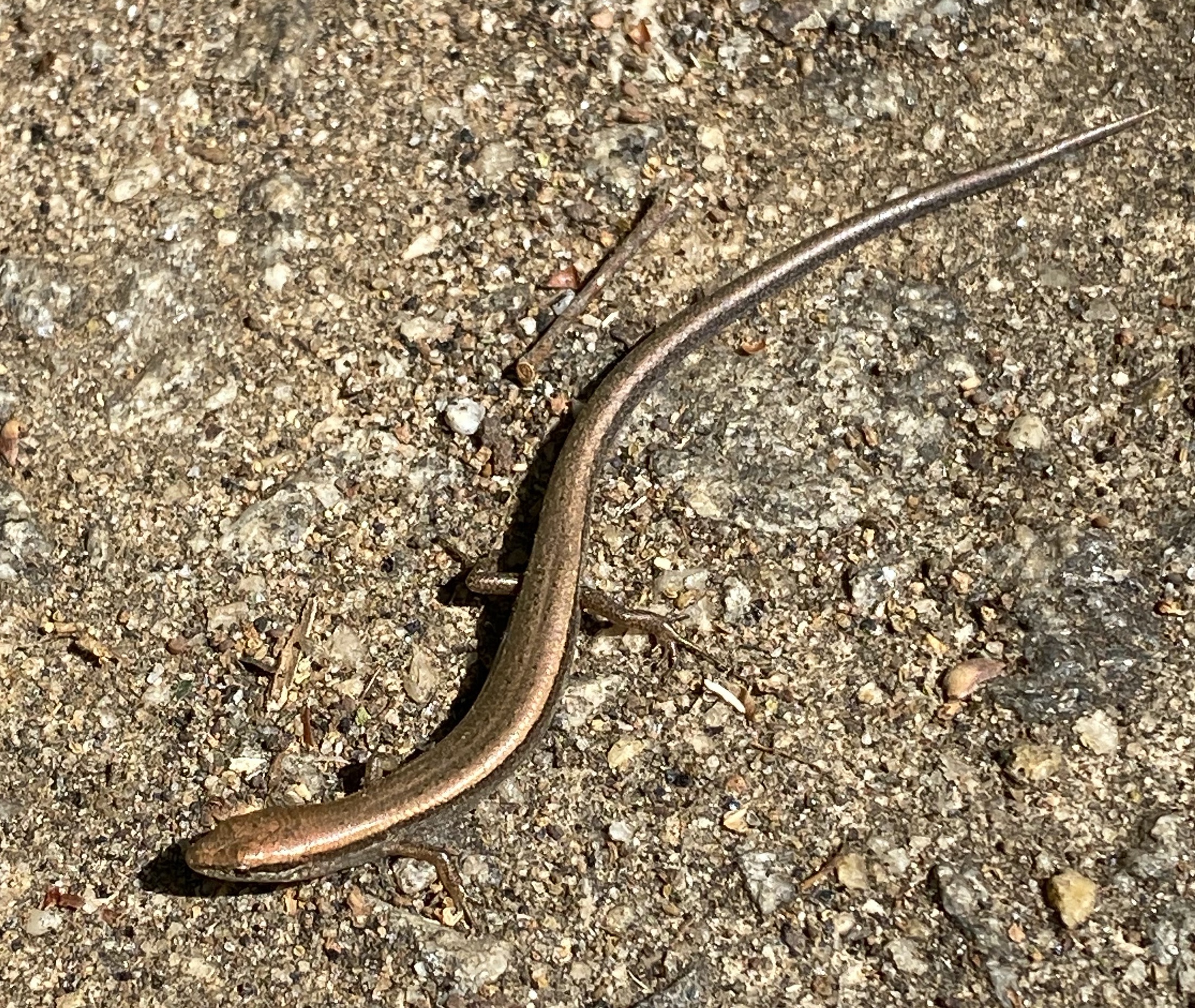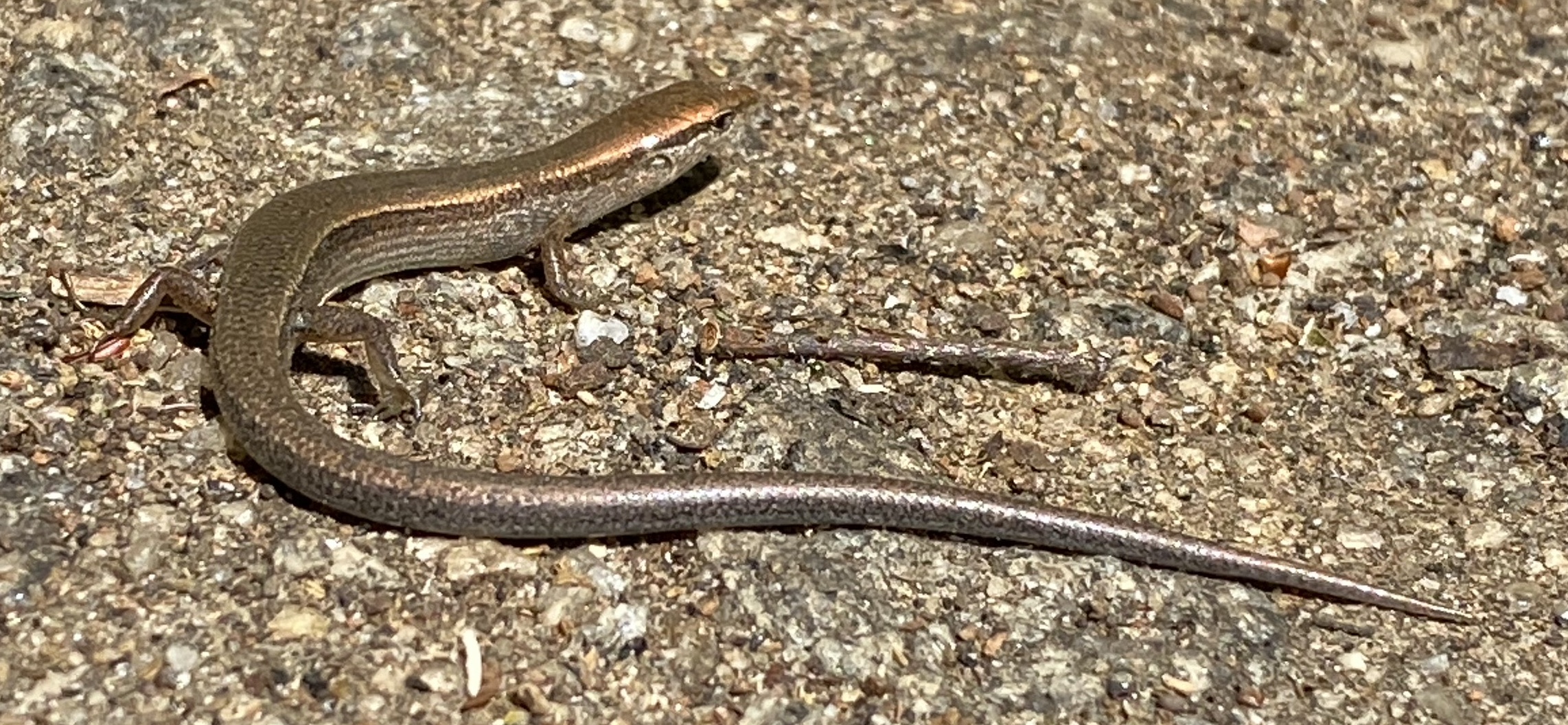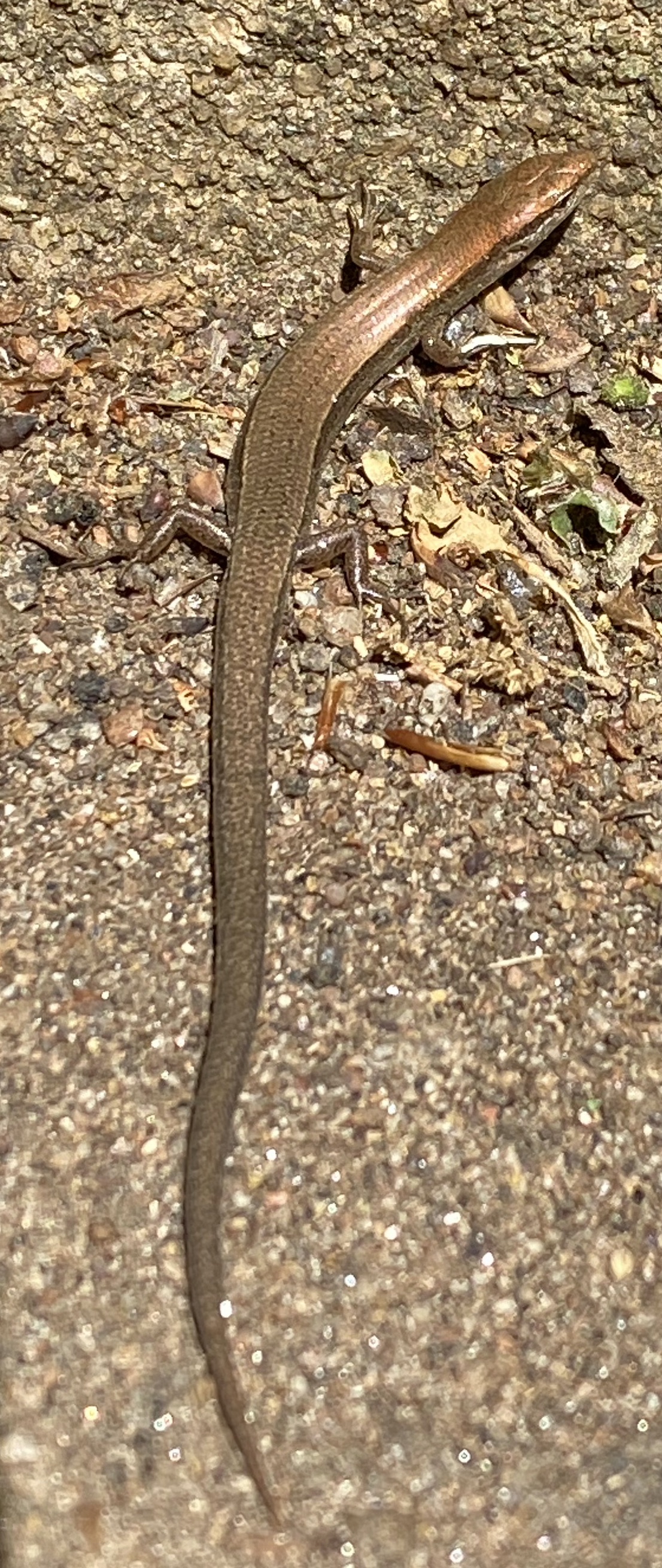LITTLE BROWN SKINK
4/17/20
After over twenty years in this house, I am still finding new animals. Today it was a Little Brown Skink (Scincella lateralis).
I found it while sweeping our curb—it was hiding down in the leaf litter. It thrashed wildly when I swept, and that’s how I noticed it.They’re quite small; this one was maybe 4" long, and Whit Gibbons et al. (2009) report that the adults grow only to 5".

The upper body was coppery and very reflective in the sunlight. The scales are smooth. Along each side is a dark stripe, and it the underside is light colored, almost cream.

The tail seems impossibly long relative to the body, and it is round. The legs are small, and the body moves like a snake. With this combination, I didn’t even notice the legs at first. The head is narrow and pointed.

Gibbons et al. (2009) report that they are ubiquitous in wooded habitats, and common in urban and suburban areas. They eat small insects, spiders, millipedes, and isopods. They also report that they are often eaten by cats and dogs, and I’m wondering if I’m now just seeing them because we no longer have an outdoors cat. That may also be why I see so many Green Anole in our yard now—at least six were living by our mailbox earlier this spring.
Reference
Gibbons, W., J. Greene, and T. Mills. 2009. Lizards & Crocodilians of the Southeast. University of Georgia Press, Athens.